
Topics
Guests
- Juan GonzálezDemocracy Now! co-host and columnist for the New York Daily News, author of Fallout: The Environmental Consequences of the World Trade Center Collapse.
- JoAnn Lumcommunity organizer with Beyond Ground Zero, a coalition of public health advocates, doctors and clergy that came together in response to the health crisis among Lower Manhattan’s poor population following 9/11.
- Yolanda Hernandezlongtime resident of the Lower East Side. Has suffered serious health effects from the toxic dust at Ground Zero.
- Joel Kupfermanexecutive director of the New York Environmental Law & Justice Project. Co-counsel for a group of residents and workers suing Whitman and the EPA.
On Monday, two busloads of Ground Zero workers and residents traveled to Washington to hear Christine Todd Whitman’s testimony. We hear from two members of the group Beyond Ground Zero, environmental attorney Joel Kupferman and Democracy Now! co-host Juan Gonzalez, who attended Monday’s hearing. [includes rush transcript]
Transcript
AMY GOODMAN: For many seeking government accountability for illnesses or complications from the Ground Zero dust, Monday’s hearing marked a small feat in a long struggle. Despite nearly six years, thousands of illnesses and at least two attributable deaths, it was the first time a top federal official has publicly responded to questions on the government’s handling of the environmental health impact of 9/11.
At least two busloads of Ground Zero workers and residents made the trip down to Washington, D.C. I’m joined now by two members of the delegation. JoAnn Lum is a community organizer with Beyond Ground Zero. It’s a coalition of public health advocates, doctors and clergy, formed in response to the health crisis in Lower Manhattan after 9/11. Yolanda Hernandez is a longtime resident of the Lower East Side, has suffered serious health effects from the toxic dust at Ground Zero.
Joel Kupferman is also with us, executive director of the New York Environmental Law & Justice Project and co-counsel in a lawsuit against the Environmental Protection Agency, alleging it failed to protect people from the poor air quality in the days and weeks following the World Trade Center attacks. On the phone with us, New York Daily News columnist, Democracy Now! co-host, Juan Gonzalez, the first reporter to question government officials’ claims on the safety of the Ground Zero air and remains a leading voice on this issue. He wrote the book, Fallout: The Environmental Consequences of the World Trade Center Collapse.
Juan, I know you got in about 2:00 or 3:00 in the morning, so you’re not able to join us here in the studio, but your assessment of this first-appearance public explanation by Christine Todd Whitman?
JUAN GONZALEZ: Well, Amy, as you saw in the clips, I think the main thrust was that Whitman had no regrets about any of the stuff that she had told the public, or that her agency had told the public, in the first few days after 9/11. She reiterated that the scientists — that she was following the conclusions of the scientists. Yet Congressman Nadler raised to her that there were scientists within the government who had raised concerns from the earliest days, including Ed Kilbourne from the Agency for Toxic Substances and Disease Registry, ATSDR, who warned on September 12 that there were significant asbestos readings in the scanty — in the early tests that EPA had done and questioning whether it was advisable to have people re-enter buildings in the financial district. And Whitman basically did not respond to that, when she was told by Congressman Nadler that there were very few air-monitoring tests in the first couple of days before she made her first pronouncement that there were no danger problems from contaminants, but that the few tests that there were — for instance, the City of New York had 10 asbestos air-monitoring tests in the first couple of days. Seven of them, or 70 percent, showed elevated asbestos levels. And when she was asked about that, she said that she couldn’t recall which tests were taken on what day, but she continues to say the scientists were backing up her claims. So I think that was one big hole in the testimony.
I think the other interesting thing, which was the discussions about the White House involvement and the rewriting of press releases. Whitman essentially defended having non-scientists involved in the rewriting of these press releases. At one point she said that there had been one substantive change that she did not agree with, that a White House aide had directed be changed, eliminating all advisories from EPA that people should professionally clean their apartments before returning. And the White House official, who later testified after her, Samuel Thernstrom from the Council on Environmental Quality, insisted that he did that because there was a jurisdictional question that really belonged to the City of New York to decide, not to her EPA. But Whitman admitted that she did not agree with that, but then she went along with it at that point, because she was trying — she believed in the idea that the government should speak with one voice.
The other interesting thing, I think, that she said was that she said at one point that she had been told by White House officials that President Bush wanted the downtown area, the financial district, opened on the Friday of the attack, which — the attack was on a Tuesday, so within a couple of days the president wanted the financial district reopened — but that she convinced the White House to wait a few more days until they were able to do more testing, and so the financial district opened on the following Monday.
AMY GOODMAN: That’s astounding, Juan. We’re talking about the September 11 attacks being Tuesday, September 11, 2001. Three days later, on Friday?
JUAN GONZALEZ: Right.
AMY GOODMAN: On September 14, they wanted Wall Street to be open?
JUAN GONZALEZ: Right. And she also said that she had gotten a call from a key person in the White House Council of Economic Advisers reminding her how important Wall Street was to the country. But she said that she did not feel that that was pressure from the White House to reopen the financial district. And she seemed to indicate that she demonstrated her independence by saying, “Hey, let’s wait until Monday. Let’s not do it on Friday.”
AMY GOODMAN: Interestingly, also, when it came to Rudolph Giuliani, though he has criticized her, she defended him.
JUAN GONZALEZ: Yes. She basically said she did not want the press to stoke any kind of conflicts between her and Mayor Giuliani. And at one point she said, “I don’t think Mayor Giuliani is criticizing me, and I’m not criticizing him,” while at the same time she did say that EPA, on an almost daily basis, told the City of New York that the workers at Ground Zero needed to be properly — to have proper breathing apparatuses and proper equipment. And she said this was being done on a daily basis. And obviously, if it was being done on a daily basis, it’s because the instructions weren’t being followed.
And when she was asked by several of the congressmembers, “Well, EPA was the ultimate agency in charge, you could have stepped in and taken charge of the site,” she said that they considered that, that they talked to their lawyers, and that she felt that if EPA had moved in and sought to assert control that it would have been considered an agency — in essence, because there were firefighters and police that were still digging up the remains of people who had died there — and that there would have been a huge public uproar against her agency. They decided ultimately that they would not exercise federal control and take over the site. So she really was criticizing the City of New York for failing to properly protect the Ground Zero workers, but at the same time she did not — she was obviously trying to pull her punches in terms of, like, directly criticizing former Mayor Giuliani.
AMY GOODMAN: And saying that she didn’t want people to wear hazmat suits, it would look like the city was falling apart?
JUAN GONZALEZ: Yeah. She didn’t really talk about that in this hearing. She has said it in interviews in the last few days. But she concentrated more on the issue — because she was told by, and so was John Henshaw, the OSHA head, that over at the Pentagon no one was allowed on the site at the Pentagon attacks during the recovery phase who was not wearing proper equipment. And Henshaw tried to — said something to the effect that the local state regulations there did require all municipal workers to follow proper federal guidelines, whereas in New York City police and firefighters are not covered by OSHA regulations, so that basically was up to the City of New York to do its own policing.
AMY GOODMAN: JoAnn Lum, can you talk about your coalition and talk about your response to the hearings that you attended yesterday?
JOANN LUM: Beyond Ground Zero is made up mainly of a lot of the most forgotten victims of 9/11. That is residents in the Lower East Side, Chinatown, Lower Manhattan, low-income, immigrant cleanup workers around Ground Zero, as well as office and service workers and others who worked in the area of Lower Manhattan. And what we’re seeing, people were really determined to go down to Washington yesterday. So we went in two busloads, because people were really angry. They remembered what Christine Whitman said in 2001. And, in fact, one of the Ground Zero workers who went yesterday said, “If I had been told that this was a danger zone, I would have been the first not to have gone in there to work.”
And a lot of the workers who did go to clean up and help out, they felt like they were heroes. They felt like, you know, they were helping this country get back on their feet. They sent pictures back to their homes, their families in Colombia and Ecuador and Mexico, very proud. And so, when they began to get sick after being exposed to the 9/11 toxic fallout, they felt betrayed by this country and really angry. And so, when people went down and heard her yesterday say that she maintained that the air was OK outside of the pile, people were enraged. I mean, people felt betrayed again, I mean, that the government continues to lie like this, because meanwhile they are sick and getting sicker every day and feeling that the government has not been helping them address their illnesses. And so, we have Lower East Side residents, like Yolanda, many others, who live, you know, within a mile away and who are really sick and getting sicker.
AMY GOODMAN: We’re going to go to Yolanda just after break. JoAnn Lum, community organizer with Beyond Ground Zero. Yolanda Hernandez, longtime resident in the Lower East Side. And we’ll speak with a New York environmentalist, an attorney, who is suing the Bush administration over the way they dealt with the consequences of the 9/11 attacks. Stay with us.
[break]
AMY GOODMAN: Our guests are Juan Gonzalez, on the line, wrote Fallout: The Environmental Consequences of the World Trade Center Collapse, just came back early this morning from the hearing yesterday in Washington, D.C., the congressional hearing that was chaired by New York Congressmember Jerrold Nadler. We’re also joined by Joel Kupferman, executive director of the New York Environmental Law & Justice Project, who is suing the Bush administration, and Yolanda Hernandez, a longtime resident of the Lower East Side. Yolanda, what happened to you after September 11? Where were you on that day in 2001?
YOLANDA HERNANDEZ: That day, I be in my house. And I see, you know, the coming a lot of this dust in my house, a lot of dust. So I say, what happening? I don’t know what happening. So I put my head, you know, out the window. I see the twin, you know, go down. So I say, “Oh, my god, what happened?” So I told my daughter, “What’s going on?” But then I say, “What happened?” I say anything — you know, coming down dust, and I be coughing. So I tried to clean it, to clean it.
But two months later, I feel like a pain in my chest. So I go to the hospital to see what’s going on. And the doctor said that I have a problem in the respiratory. I hear about the program in Bellevue. They have it —
AMY GOODMAN: Bellevue Hospital in New York.
YOLANDA HERNANDEZ: Bellevue Hospital, Red Cross. So I go over there to get — they told me they do an examination complete. So they do an examination complete, and they found I have an inflammation in my lung. I never have this in my life. And now I’m taking medication twice a day. I said to the doctor, “Am I going to have the inflammation all my life?” He said, “Yeah, because, you know, your lung is — you know, they’re no good.” And that’s because of the dust. And that’s coming from that.
But my point is, why they lie? Why Christine would lie that the air is clean, when that is not true? I’m disappointed, because yesterday when I go to the conference, I not see that she apologize for nothing. She only defends herself. She don’t care about the people that die. A lot of people die. I’m not the only one, because now I’m here. But in the future, I don’t know, that I could become worse. And concerned about the people, you know, be there, too.
AMY GOODMAN: Have you gotten any kind of compensation afterwards or healthcare, special healthcare, reimbursed?
YOLANDA HERNANDEZ: Having healthcare, but, no, I don’t know how long that I have the healthcare, because I only like [inaudible] for the people, and they give you, you know, examination to see in the future to have hope, you know, to not be sick no more. And the government and Bush do nothing. The only thing they do is lie, lie, and they continue lying.
AMY GOODMAN: Joel Kupferman, talk about your lawsuit.
JOEL KUPFERMAN: The lawsuit represents people like Yolanda, students, workers, office workers that came back to Lower Manhattan on Christie Todd Whitman’s false words that all was safe. We made a constitutional claim, claiming that there’s a Fifth Amendment violation, that these words brought these people back into the zone of danger and risked their bodily integrity. Right now, we’re in the court of appeals. Judge Batts’s decision was quoted heavily yesterday. The phrase “egregious conduct” was Judge Batts’s term for Whitman’s words. And we await word from the court of appeals. We await all argument.
AMY GOODMAN: You’re wearing an orange ribbon on your shirt. What is that about?
JOEL KUPFERMAN: This is for the victims of Agent Orange. We’re in court of appeals, the same Second Circuit just last week, representing those victims, trying to get them compensation from the U.S. spraying of Agent Orange. What’s alarming — I thought it couldn’t really get worse with 9/11 — but it turns out that Christie Todd Whitman is now on a panel sponsored by the Ford Foundation to create dialogue to figure out what happened in Vietnam with Agent Orange and to help the victims. So when we heard that it was Christie Todd Whitman, I was quite taken aback.
AMY GOODMAN: JoAnn Lum, your organization, Beyond Ground Zero, did a report about a year or two after the attacks talking about the effects on the low-income communities of New York around 9/11. What did you find?
JOANN LUM: We found that among a lot of these low-income residents of Lower East Side and Chinatown and the low-income workers who cleaned up Ground Zero, that, you know, just a high percentage of them have come down with all kinds of illnesses since their exposure to 9/11: a lot of respiratory problems, digestive problems, skin, vision. There are high incidences among women of miscarriages. And people are saying that it’s because of their work down at 9/11.
AMY GOODMAN: I remember a story that actually The New Yorker magazine made famous of a very high-end apartment building, where the residents came home not too long after 9/11. And they saw people in the lobby who were asking them for their addresses, how much money they needed. And they gave them something like $10,000 or $15,000. And they said, “Why? We haven’t even asked for this.” And they said they were giving out money. They couldn’t even refuse the money. Yet what has happened in the low-income communities?
JOANN LUM: Nothing like that was ever offered to the low-income people. And, in fact, we found that there was a disproportionate amount of FEMA money, Federal Emergency Management Agency money, that went to the higher-income ZIP codes in Lower Manhattan and that people on the East Side, the lower-income people in Chinatown and the Lower East Side, got a very small percentage of the aid from FEMA right after 9/11. And we felt like this was real discrimination, you know, racially and income-wise, for people who were affected by 9/11.
AMY GOODMAN: Joel Kupferman, Rudolph Giuliani — yes, the hearing yesterday was Christine Todd Whitman about her, the former New Jersey governor and, relevant here, the former head of the EPA. But where did Rudolph Giuliani fit into this picture and that whole discussion of Christine Todd Whitman saying that they wanted the respirators, it was the city that was not pushing this, it was the mayor?
JOEL KUPFERMAN: He was right in the middle. He kept on claiming that he was responsible for the site. He basically tried to keep the federal government out. He kept a lot of the warnings that the federal government was supposedly giving going to his people. But also what was scary is that he silenced a lot of people. I spoke to scientists in the New York City government that were told, “Stay out of Lower Manhattan. We don’t want you. We don’t want your expertise.” And I think that is Mayor Giuliani’s fault for keeping a lot of that information away from people.
AMY GOODMAN: What do you mean?
JOEL KUPFERMAN: They kept on talking yesterday about the scientists, relying on the scientists. A lot of this information, relying on the scientists, was only on a few scientists. There were scientists that were screaming that this was the wrong information, and the mayor and Christie Todd Whitman kept these people silent.
AMY GOODMAN: Where does your court case stand right now?
JOEL KUPFERMAN: Well, we’re waiting for the court of appeals to rule. But I just also want to point out that what we’re asking for is a proper cleanup. EPA came in and did a very improper cleanup, told people that just by doing a few minor changes, you know, following their procedures, that their apartments were clean. And it turned out that their apartments were not cleaned. And so, we’re asking for a proper cleanup. We’re also asking for proper monitoring of all those people who are out there. So we’re waiting for the Second Circuit. And Christie Todd Whitman is claiming immunity, that the fact that she was a government official that she should be basically let off the hook.
AMY GOODMAN: Juan Gonzalez, you wrote a piece on Monday. This was just before the hearing yesterday, where you talked about the 10 questions you had for Christine Todd Whitman. What do you think still has to be answered today?
JUAN GONZALEZ: Well, I think that there are still — most of the questions that I listed were asked, although I think that one was not really followed up very well, which is, you know, many of the respiratory problems that people have suffered from have been traced to scarring of the lungs and into people’s breathing system, a lot of it caused by the highly caustic dust that was blanketing all of Lower Manhattan. And, in fact, the alkalinity levels were as corrosive as drain cleaner, according to one study that was done but was not released to the public until months afterwards. And EPA was required to test for alkalinity to protect rescue workers in any emergency. They had never released any of those initial reports, if they took them, or they may not have taken them at all. This was never really followed up. A question was asked to Whitman about it, but she deflected it, and then it was never followed up on by any of the other congressmembers.
But I think that the other interesting issue is the whole issue of the White House involvement. I think the members of the Congress who compared the original press releases of EPA versus what was actually produced show that there were clear substantive changes, not just mere word changes, to these releases to downplay any alerts to the public that this may be a problem, the contamination there. And the interesting thing, in terms of that, was that Samuel Thernstrom, who was the person at the White House who was actually doing the rewriting of the releases, was asked at one point — because he came on in a panel after Whitman, and by then most of the press had left, and they didn’t pay attention to the important Thernstrom testimony — but Thernstrom, he was assigned to coordinate between the National Security Council and the EPA and OSHA all public announcements about environmental problems. Thernstrom was asked, “Who appointed you at the National Security Council to this job? Who were you reporting to?” He said, “I don’t know who appointed me.” He said he did not know who his superior was at the National Security Council. And yet the Security Council had to approve all of the press releases he was rewriting. So at one point Congressman Nadler asked him, “Well, who did you send your press releases to to get approval?” And Thernstrom, in a bizarre exchange, said, “Well, I faxed them to the National Security Council, and then I got a reply back with the approval of my press releases.” So in other words, I believe he clearly must have known who at the National Security Council he was reporting to and who had the ultimate say, but he couldn’t remember, and he didn’t know, because I think he was in essence trying to not identify someone in the National Security Council to whom the committee could then try to possibly recall in a future hearing, so that the role of the National Security Council, in essence, of vetting all press releases that came out from OSHA and EPA, to me, is critical.
And the final thing is that John Henshaw, the head of OSHA, made a startling statement at one point when he was asked — I think it was by Keith Ellison. He said, “Isn’t it true that there is no safe, recognized safe, level of asbestos exposure?” And Henshaw said, “No, that’s not true. There is a safe level of asbestos exposure.” Now, there is nothing in any government record that I know of that says that there is a safe level of asbestos exposure. There are permissible levels that workers can be exposed to, but there is no safe level, and no science has recognized that there is a safe level of asbestos exposure.
AMY GOODMAN: And Christine Todd Whitman saying she feared that New Yorkers would react badly if the federal government took over the site, taking the city to court, that the debris pile represented a substantive and imminent danger, a finding that would have given the federal government the right to take over?
JUAN GONZALEZ: Yes. The EPA had the legal authority to take over the site. It chose not to do so. But I think the argument of many of the litigants is that it still had ultimate responsibility for assuring that the public’s health was protected, and it did not do so.
AMY GOODMAN: JoAnn Lum, where does Beyond Ground Zero go from here? This is, what, now six years later.
JOANN LUM: Well, we’re calling for the government to pay for this lie, this misconduct, and so besides Christine Whitman apologizing, acknowledging, apologizing, we’re saying that she should be punished for this. She should go to prison. I mean, people died because of her misconduct, her lie. And so, one of the things we’re also calling for is that the government, the federal government, put funds into addressing the health problems of these victims of 9/11. Like Yolanda was saying, you know, through organizing, we were able to get this 9/11 health program at Bellevue Hospital, which is good, but it’s way underfunded. The federal government really needs to put money into a quality, accessible medical treatment program, and it needs to also put money into investigations, study, because a lot of the doctors, even as they see people now, they don’t really know how to treat it, because the symptoms are growing increasingly complex. The illnesses are getting increasingly serious. And so, we’re also calling for all residents and workers out there who are sick or afraid of getting ill to come forward, to come together, so that we can put pressure on the government so that they take action to address these illnesses.
AMY GOODMAN: And, Yolanda, what do you need most, and other people? Do you find other people in your community in the Lower East Side, any of them, suffering from the same thing you are?
YOLANDA HERNANDEZ: Yeah, especially in my building, it’s a lot of people, you know, suffering from asthma, and they don’t know that’s coming from 9/11. Now they find out they have the same problem and say, “I have the same problem, too, and I don’t know, you know, to go, because nobody — nobody believe me.” But now the people say, “Now I know why I’m sick.” So it’s a lot of people now in my building. They go to the hospital. There’s a lady now in the building, she’s very sick, and she can’t breathe. And that’s coming from 9/11. So I ask, you know, the people — they feel they’re sick — to go to the hospital, because, you know, help, and to demand Bush to do something, because, you know, it’s a lot of people die. And Christine Whitman, she’s the one who kill these people. And like I said before, she needs to pay for what she did to the people.
AMY GOODMAN: I want to thank you all for being with us: Yolanda Hernandez is sick, lived in the Lower East Side at 9/11 and today; Joel Kupferman, executive director of the New York Environmental Law & Justice Project, co-counsel for a group of residents, workers, students, suing Christine Todd Whitman and the EPA; JoAnn Lum is with the group Beyond Ground Zero, a coalition of public health advocates; and, of course Juan Gonzalez, Democracy Now! co-host, New York Daily News reporter, wrote the book Fallout: The Environmental Consequences of the World Trade Center Collapse.

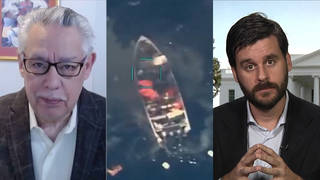
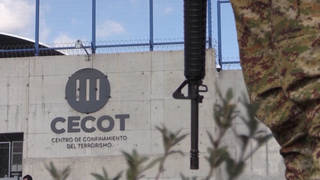
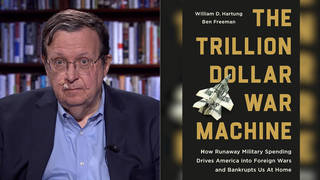
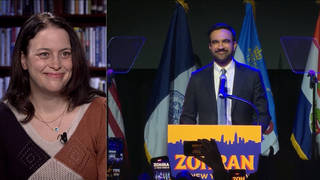





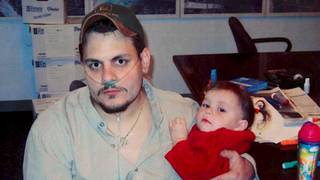
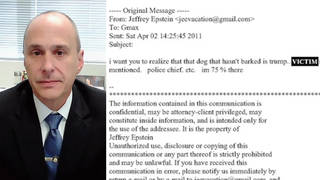
Media Options